Sean Mazelli of San Diego's South Park neighborhood emailed: "Hi Debra, hopefully you can help. I have a huge cactus that fell over. I just loved it, in fact it was a big reason why I bought the house."

Euphorbia ammak 'Variegata' before it fell over (photos by Sean Mazelli, San Diego EcoRentals)
My first thought was that the base of the trunk had rotted, but that proved not to be the case. Like most succulents, this one was shallow-rooted, and therefore not well anchored. Several weeks of rainy weather had softened the soil and engorged the limbs, making the plant top-heavy and unstable.
Btw, it’s not a cactus but Euphorbia ammak from South Africa (cacti are indigenous to the Americas). Regardless, when such plants crash, they do what succulents are known for: growing from pieces.
Hi-ho, a-propagating we will go
Unlike woody trees and shrubs, succulent leaves and stems contain all they need to form new plants. How fallen specimens do this is both intriguing and remarkable.
Clones feed off dying parent
Below, the bleached body of a Cereus peruvianus rests beside the hole in which it once grew. Do you think it's wonderful or awful? Would you want it in your garden? (I would---great conversation piece!)

Is it still alive? Cactus offsets grow from toppled parent plant
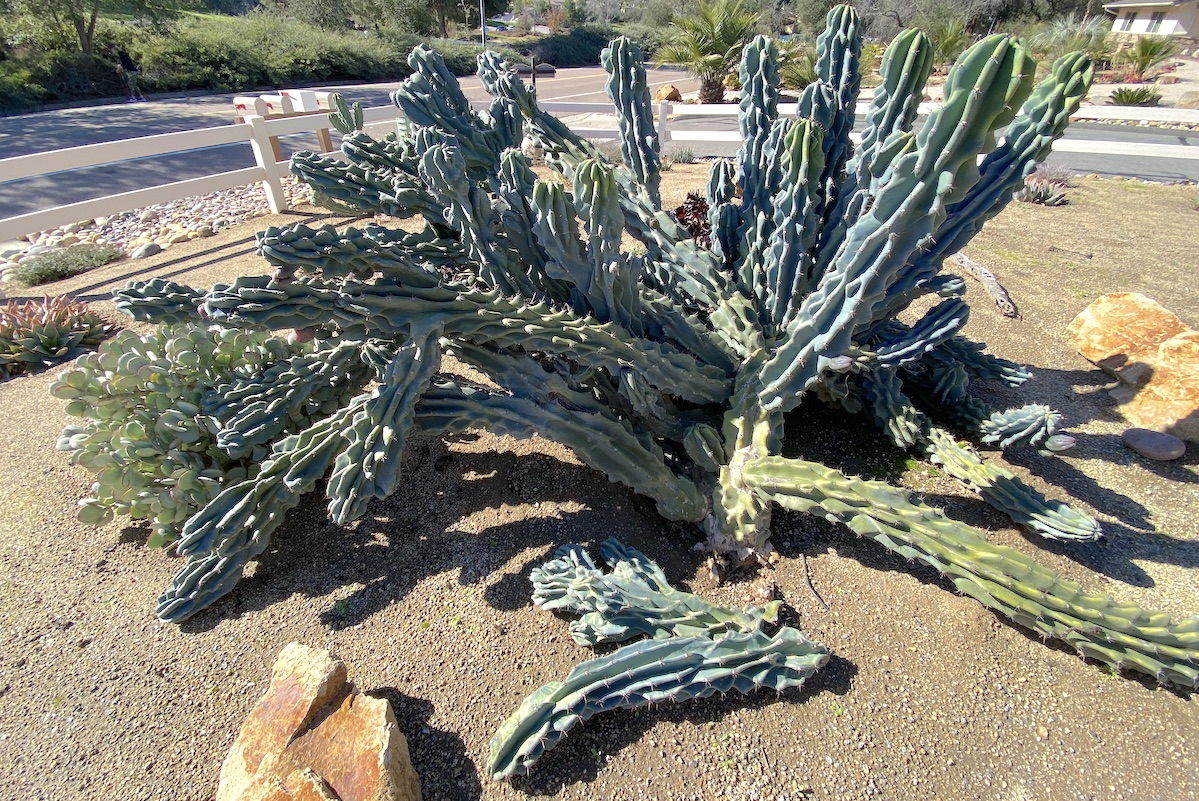
After a storm, engorged limbs of Cereus peruvianus 'Monstrosus' (blue form) broke off the plant's trunk
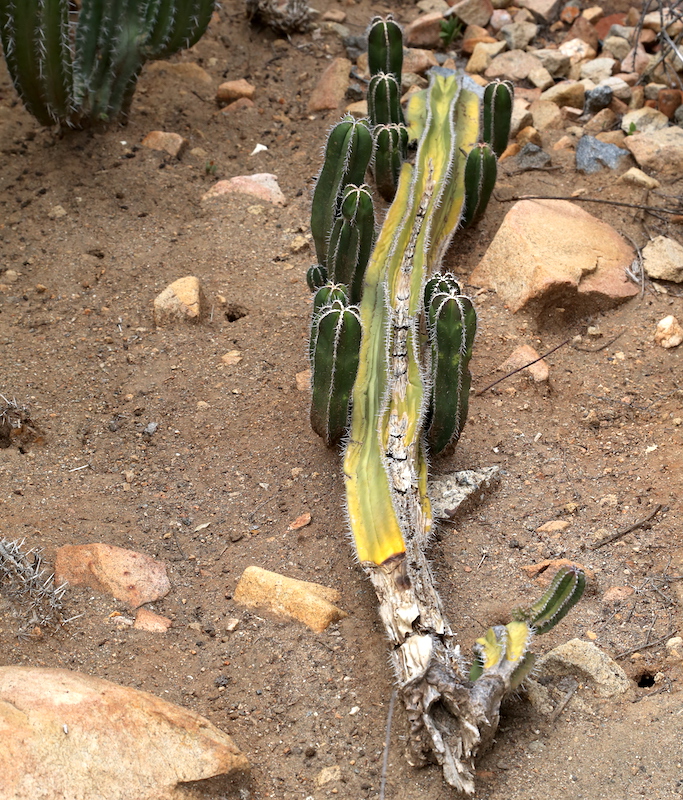
Clones thrive along a fallen Lemaireocereus marginata. The tendency of plants to grow toward the sun is "phototropism."
When barrel cacti growing on a slope uproot and roll, the poor things end up like overturned turtles.
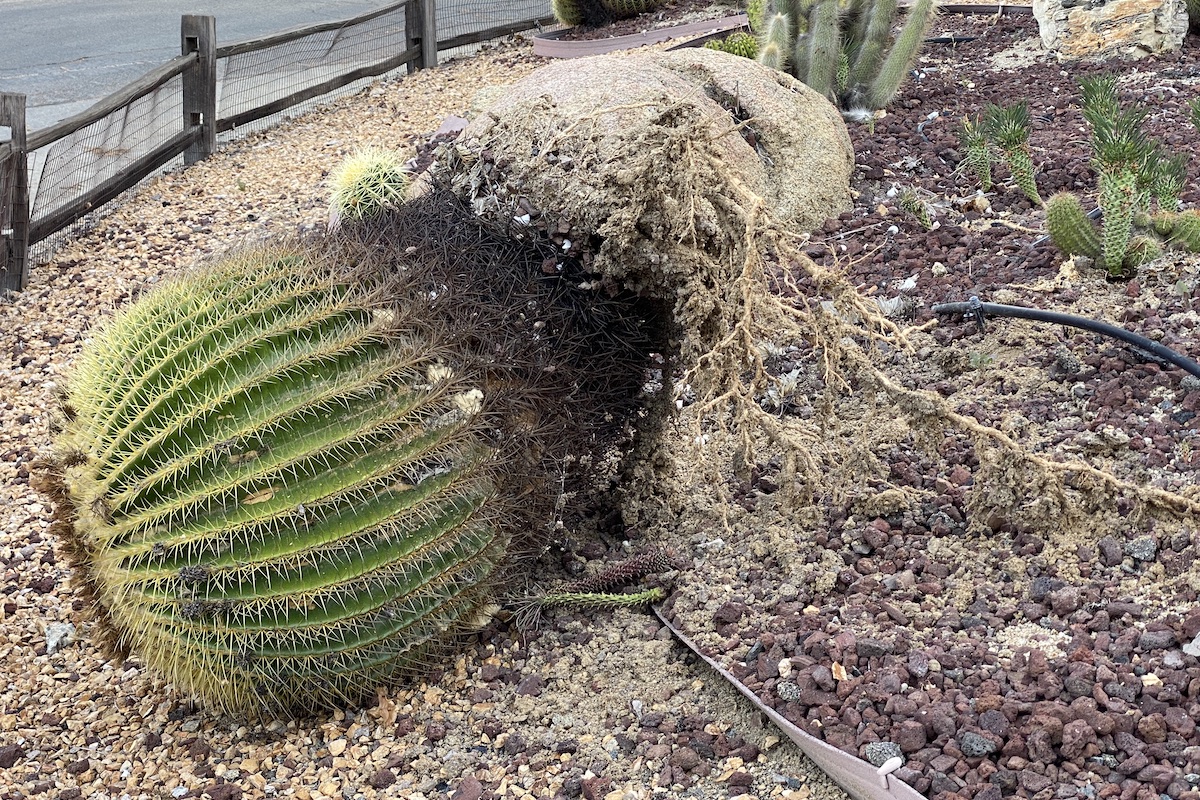
After its tumble, owners hoisted and replanted this barrel cactus, which now is doing fine.
Cacti and euphorbias aren't the only ones
Below: Offsets of leaning Agave attenuata specimens grow on stems exposed to sunlight.
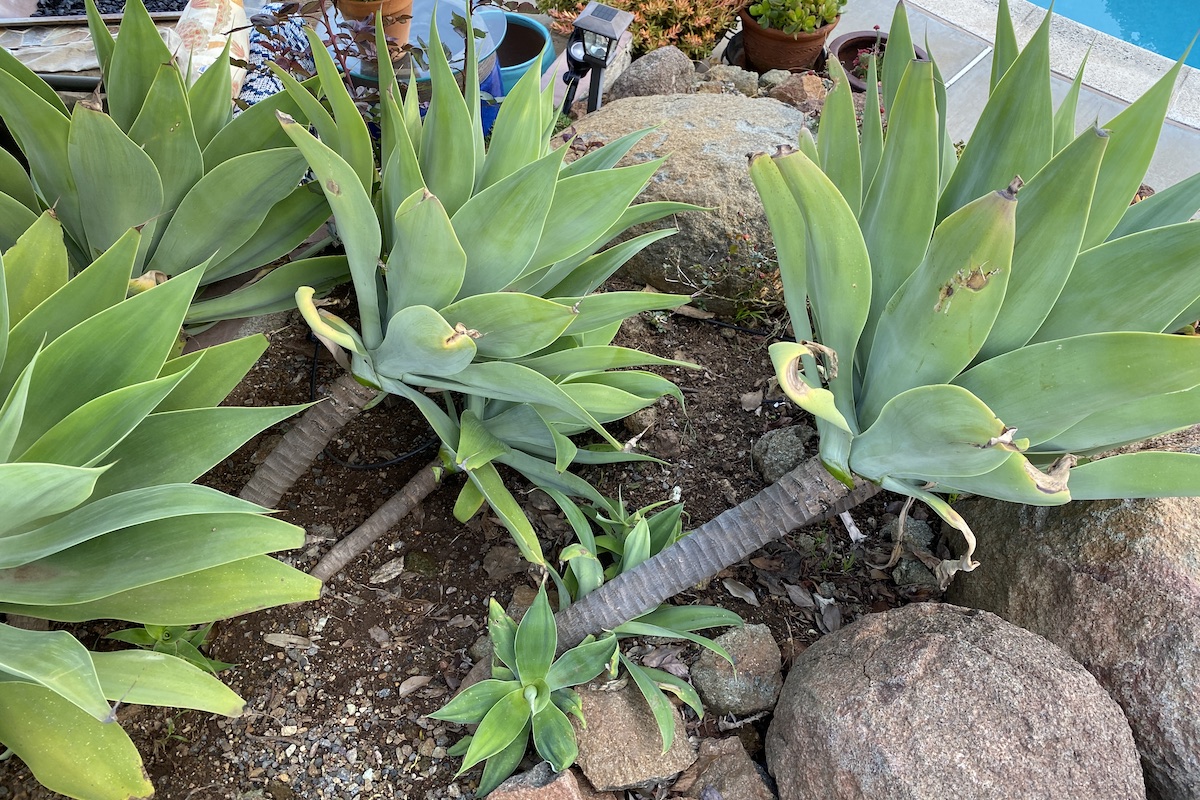
Agave attenuata, atypical of the genus, is trunk-forming.
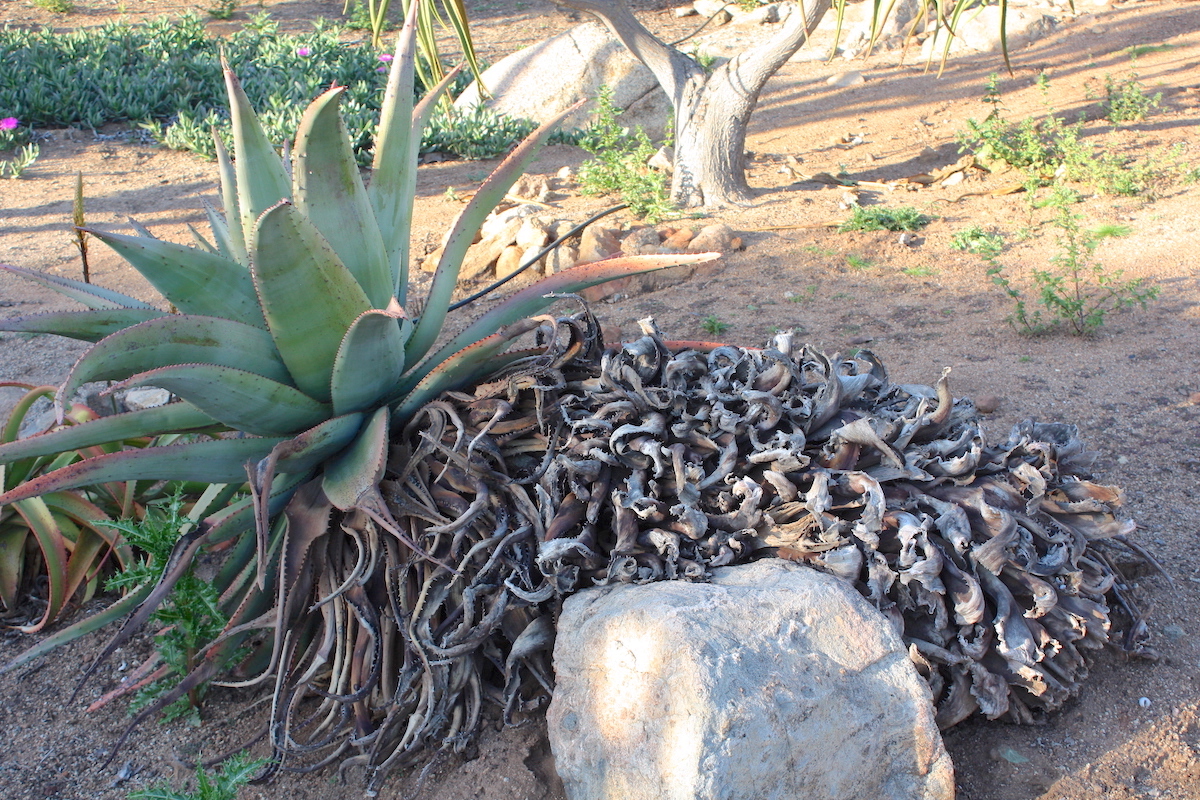
Fallen-over Aloe ferox
Small succulents tumble too
If you, like me, don't always bother to cut back and replant ever-lengthening succulents, they may eventually tumble out of their pots.
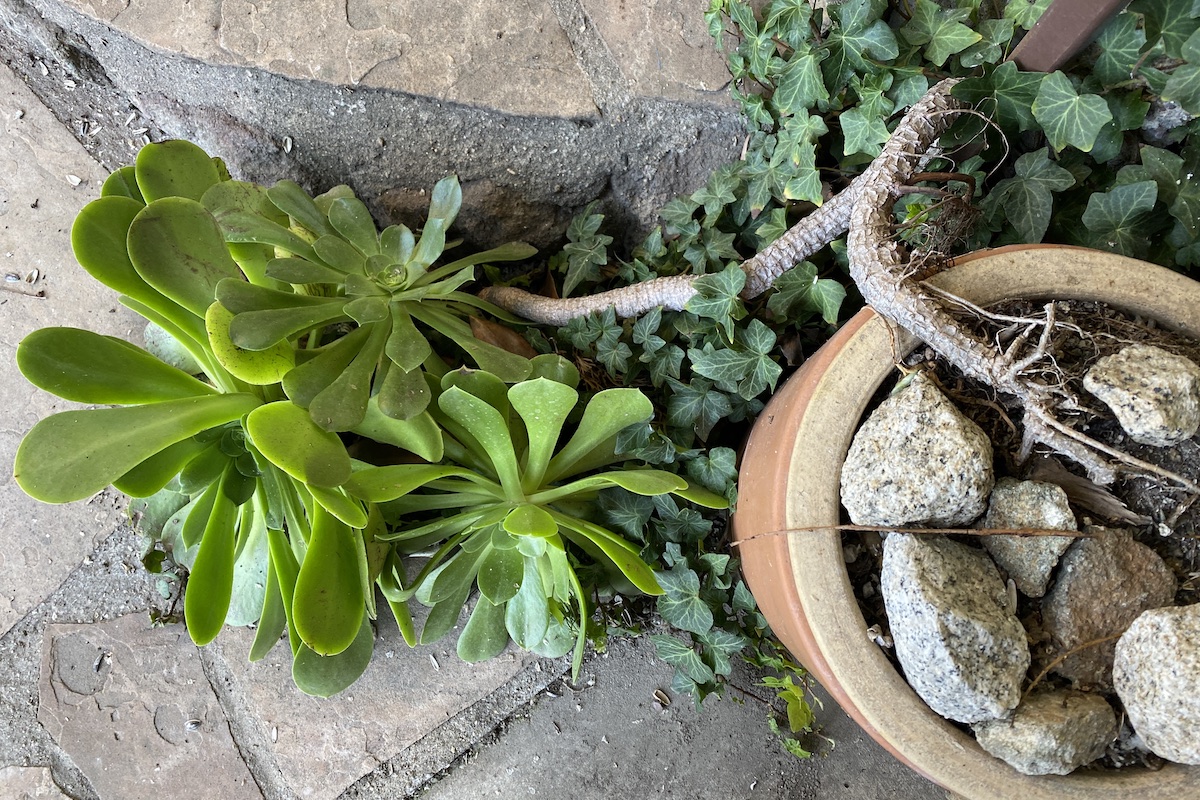
A leggy aeonium escaped its container. Note exposed roots.
Did you happen to see my post and video on planting succulents in windowsill pots? They're now four years old, and I've yet to redo them. If I hadn't weighed the pots with stones, noodle-like stems tipped with plump rosettes would have overturned the containers.
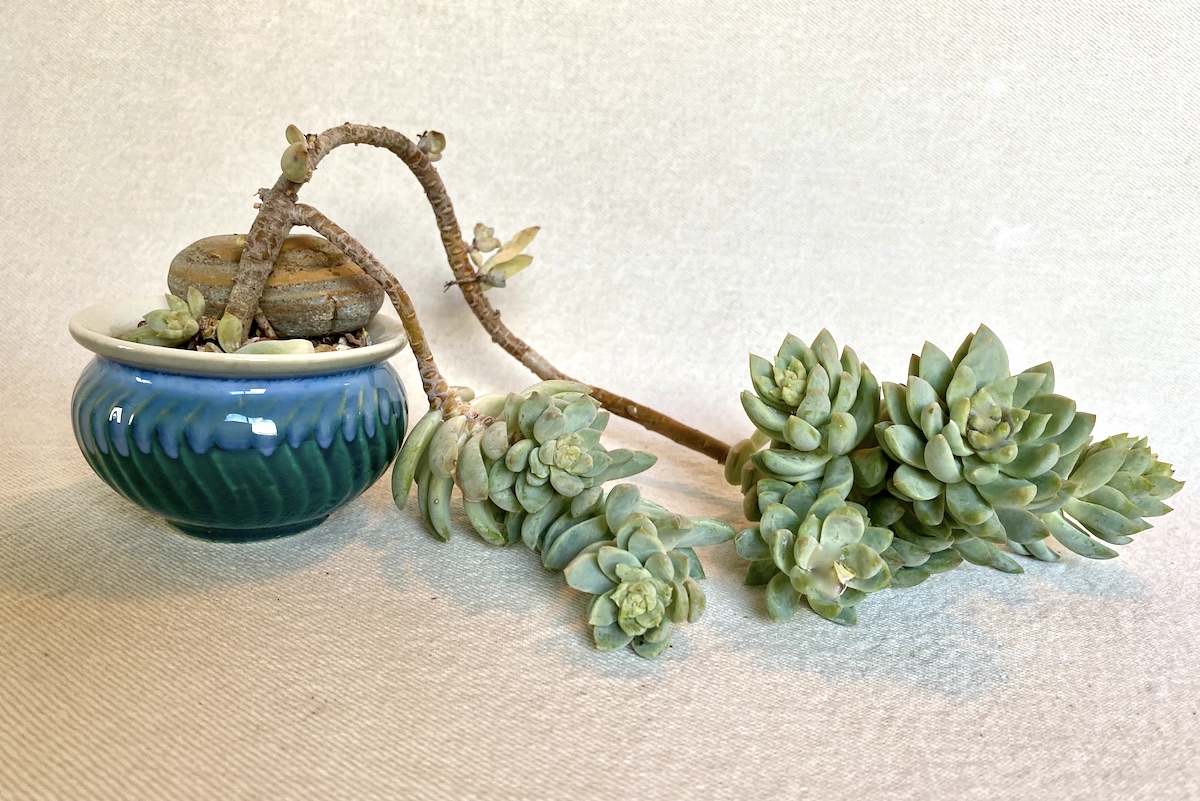
See how this sedeveria looked when first planted, in my Succulent Windowsill Pots DIY
So, what should Sean do?
"I have a contractor who says he could probably prop it back up," Sean told me. "Do you think that’s a good idea?"

Euphorbia ammak 'Variegata' at Desert Theater nursery were planted in 2005 and 2006
I showed his photos to Brandon Bullard, owner of Desert Theater nursery, where similarly sized euphorbias grow in the ground. Of Sean's he said, “No way is is that going to be upright again.”
Brandon added that the fallen tree is a wonderful source of cuttings. He suggested Sean plant a 4 or 5-foot-long “candelabra piece” where the original plant was.
"That sounds like a win-win," Sean agreed, adding, "I do have some friends that would want cuttings. It would be nice to know that I helped create more plants instead of just getting rid of them."

Euphorbia ammak 'Variegata' in a different garden, tied upright. Good idea, but conceal the strap by painting it the same color as the plant!
Keep in Mind
- If you have a top-heavy succulent, thin it out, ideally before winter storms. Plant or share the cuttings.
- Strap a top-heavy succulent to a structure or to metal posts in the ground.
- In a pinch, prop it with 2x4s or plant stakes.
- When pruning euphorbias, watch out for milky sap. Note: greater hydraulic pressure after storms increases sap flow. See my euphorbia-pruning video.
- Once soil dries and limbs return to their pre-storm girth, shallow-rooted succulent trees should be less prone to toppling.
Related Info on This Site
Euphorbia or Cactus? How to Tell
How can you tell a spiny euphorbia from a cactus? Observe key characteristics: the type of spines, flowers and leaves (or lack thereof). As I compiled my site’s new Euphorbia page, I happily acquired the ability to tell at a glance which is which. Sure, you can scratch a plant, and if it drips milky sap, it’s
Succulent Rainstorm Checklist
Succulents love rain but some may be in danger of getting too much. Here’s my own Succulent Rain Checklist for in-ground and potted succulents, plus a Succulent Rain Gallery
The post Oh No! My Succulent Fell Over! appeared first on Debra Lee Baldwin. Copyright © Debra Lee Baldwin.
from Debra Lee Baldwin https://ift.tt/TiesbfF
via IFTTT

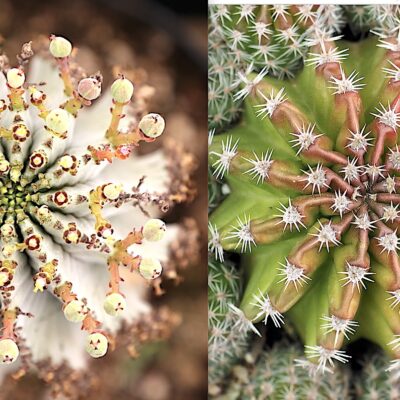

No hay comentarios:
Publicar un comentario